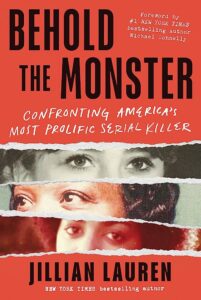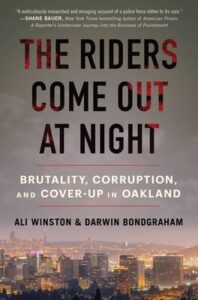The CrimeReads editors make their selections for the year’s best true crime books.
*

Jillian Lauren, Behold the Monster
(Sourcebooks)
This startling new book uncovers the crimes of serial killer Samuel Little. Through her many conversations with Little and meticulous research, Lauren begins to uncover the reasons why so many murders, now tied to Little, were once overlooked. The book is built out of Lauren’s long correspondence with the killer, but never sidelines the victims. Lauren’s interrogation of her own obsession with these cases adds an extra level of insight to a story that contains endless nuances, all of them artfully unfolded by a precise and powerful writer. –DM

Patricia Evangelista, Some People Need Killing
(Random House)
Evangelista’s deeply reported, deeply felt exposé of the so-called war on drugs conducted for years in Duterte’s Phillipines is an extraordinary work of nonfiction crime. In Some People Need Killing, which takes its title from a vigilante’s chilling remark, Evangelista takes readers through a years-long odyssey of an underworld of extrajudicial killings and mayhem, as her country staggers toward all-consuming violence under a ruthless autocrat. And yet the humanity, too, shines through, as Evangelista draws portraits of those swept up in these bigger social forces. –DM

Michael Finkel, The Art Thief
(Knopf)
Author Michael Finkel has a knack for finding fascinating personalities and bringing them to life on the page, whether it’s a reclusive man in the woods of Maine (The Stranger in the Woods) or, as in this year’s standout nonfiction title, Europe’s most prolific art thief, Stéphane Breitwieser. Over a course of years, Breitwieser and his girlfriends stole objects from museums and churches, often walking out quite casually with the artifacts, and, rather than selling them, put them on display in a secret room for their own private appreciation. In Finkel’s telling, Breitwieser makes an intriguing defense of his actions and calls into question what we think we know about these priceless works. The Art Thief is one of the most interesting and provocative books you’ll read this year. –DM

Yepoka Yeebo, Anansi’s Gold
(Bloomsbury)
In Yepoka Yeebo’s Anansi’s Gold, we get a portrait of an international con man who imposes himself in the middle of an imperialist legend and mines it for everything it’s worth. Following a US-backed junta and the deposing of its national leader, Ghana was long rumored to have a missing stash of gold. That’s where John Ackah Blay-Miezah came in. He spent decades criss-crossing the globe persuading ‘investors’ to inject money into his fund with the promise of a share in that legendary fortune, once it was wrestled free. His scam included powerful figures in Ghana and abroad, and set a wild trail for Yeebo to follow these years later. It makes for a gripping story of international finance and individual greed. –DM

Max Marshall, Among the Bros
(Harper)
Marshall’s harrowing investigation into fraternity life and interstate drug trafficking stands as one of the year’s most eye-opening reads. What looks at first to be a story of campus crime turns into an epic of national corruption, with fraternity life at the core. Marshall wades into the morass through the College of Charleston, where a group of fraternity bros who started pressing and dealing their own pills soon entered into a massive conspiracy. Marshall also follows a bigger story: one where nearly every major American corporation and institution stocks its executive ranks from a fraternity culture that encourages excess and depravity. –DM

Ali Winston and Darwin Bondgraham, The Riders Come Out At Night
(Atria)
In this searing history of police violence and civil rights activism in Oakland, two longtime investigative journalists unpack the circumstances that led to Oakland’s massive amount of police shootings and other officer misconduct over the past half century. The book also goes into the many half-hearted attempts to hold officers accountable and curb their violent behaviors. Monumental and not to be missed! –MO

Harry N. MacLean, Starkweather: The Untold Story of the Killing Spree that Changed America
(Counterpoint)
In this deeply empathetic take on the tale of 19-year-old spree killer Charles Starkweather and his 14-year-old girlfriend Caril Ann Fugate, all the assumptions made over the years about the two are questioned, and Caril Ann Fugate’s role in particular is reevaluated. When the two went on trial for the 1958 murders that made both infamous, Fugate was painted as either a murderous femme fatale or a heartless collaborator, rather than a victim of threats, domestic abuse, and terrible circumstances. MacLean rights the record and gets deep into the psychology of not only his subjects, but their claustrophobic and constrained time and place. –MO

David Grann, The Wager: A Tale of Shipwreck, Mutiny and Murder
(Doubleday)
Grann is not only a meticulous researcher, but a brilliant storyteller too. In The Wager, we get a wild tale of shipwrecks, mutiny, and court marital; its lessons—about how people tell stories, and who to believe—are eerily prescient today. In 1742, 30 emaciated sailors—survivors of a ship that left England two years before and had wrecked on a desolate island off the coast of Patagonia—wash up on the coast of Brazil. Then, six months later, another boat lands off the coast of Chile with three castaways—and their story is very different. They claim the 30 sailors are actually mutineers. The first group accuses the new arrivals as murderous senior officers. A court martial is called to determine the truth. Grann pulls the story together from archival materials, diaries, and court documents (he even traveled to the island where the sailors were marooned), all to get to the truth. But whose truth matters most depends on who has the best story to tell. –Emily Firetog, Lit Hub deputy editor

















